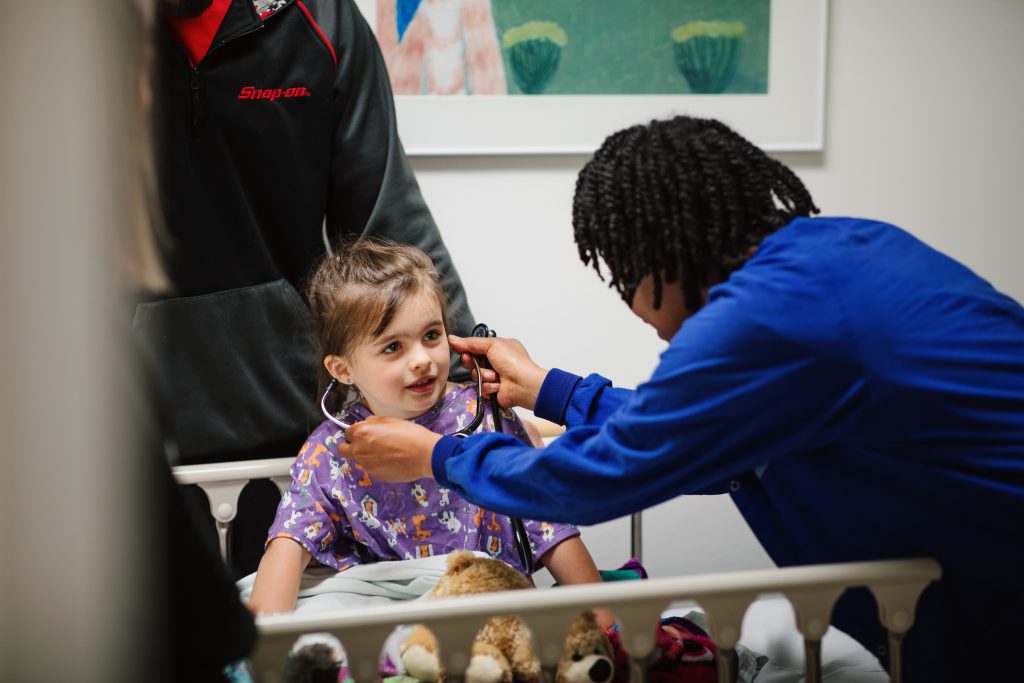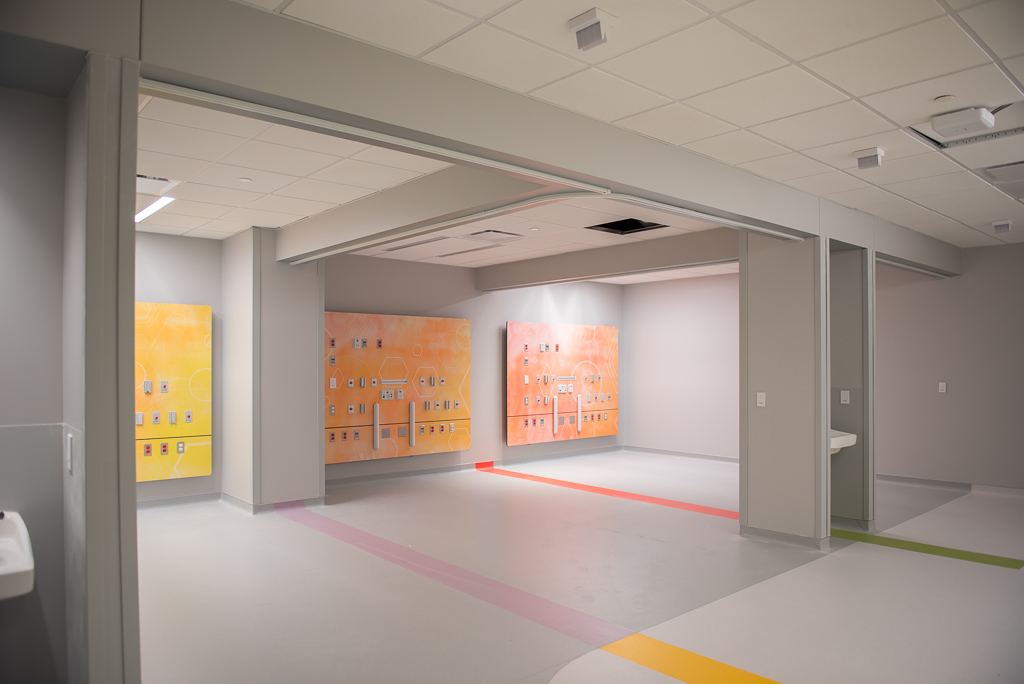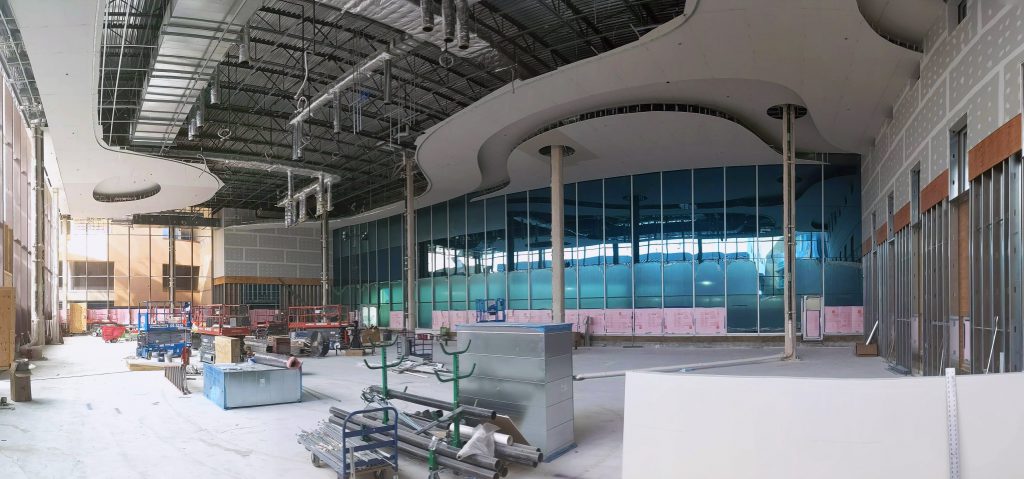Three decades into their collaboration, Kiewit continues to help Children’s Hospital & Medical Center bring new innovations and extraordinary care to the young patients it serves.
When Kiewit’s familiar yellow crane appears onsite at Children’s Hospital & Medical Center, the community knows exciting things are on the horizon.
For nearly 30 years, the partnership between Children’s and Kiewit, along with designer/architect HDR, has helped advance the quality of care in the Omaha area and beyond.
The team has worked together on projects of all sizes over the years, including the hospital’s first free-standing building, which opened in 2000, and the Specialty Pediatric Center in 2010.
A new home for complex care
Their latest collaboration, the Hubbard Center for Children, is set for completion this September.
Connecting with the hospital and Specialty Pediatric Center, the nine-floor, 460,000-square-foot facility will be the new home of an expanded newborn intensive care unit, pediatric intensive care unit, cardiac care center and more.
The structure will add space for 100 beds — doubling the hospital’s capacity. It’s a welcome and necessary update to help Children’s treat more kids, especially those who require critical care, closer to home.
As the only full-service pediatric specialty health care center in the state, the nonprofit organization serves children throughout Nebraska and the region. About 50% of patients come from outside Omaha, including every state in the U.S. and countries around the world.
“When we initiated the project, there were a couple of years when we sent many children to other facilities for care, sometimes out of state, because our hospital was full,” said Kathy English, Children’s executive vice president, chief operating officer and chief nursing officer.
“Some are acutely ill children who need the full support of Children’s. It’s incredibly important that when a family has a child who needs us that we’re available and we have a bed.”
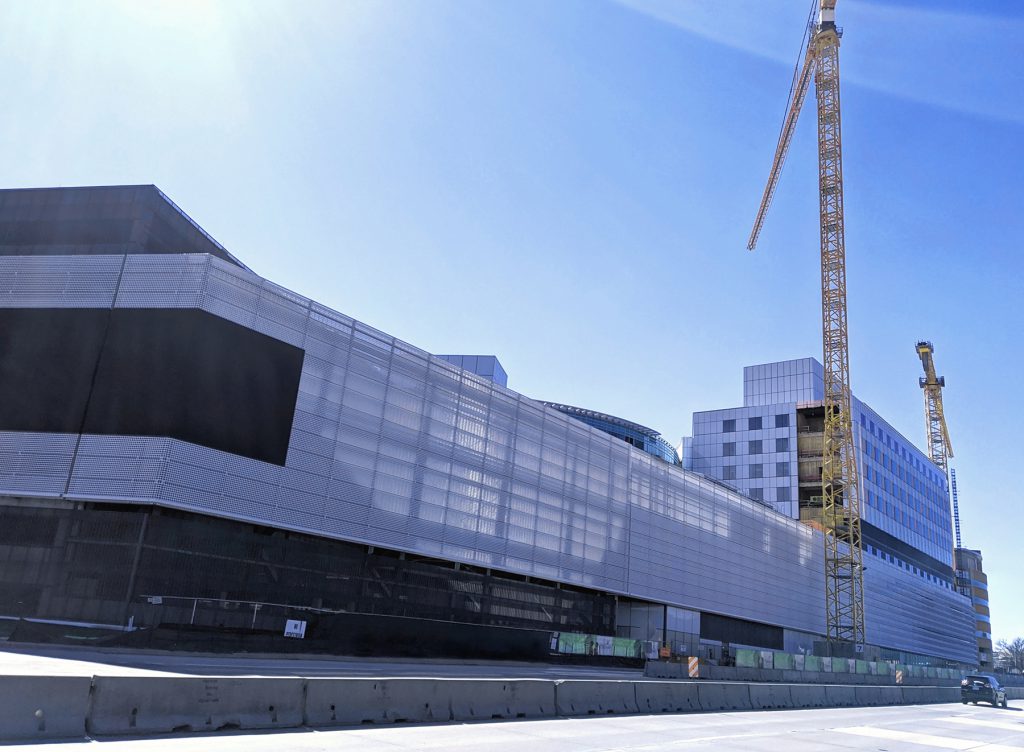
Meeting challenges
Bringing the Hubbard Center to life has posed some unique challenges since construction began in spring 2017.
That’s included navigating a jobsite with an extremely small footprint and ensuring a seamless transition among the structures.
“We’re connecting to the existing building on the south and the existing building on the west,” said Construction Manager Al Brodin. “We’re confined by W. Dodge Road on the north, and by the existing loading dock and a 762-stall parking garage, that we’ve built at the same time, on the east.”
With limited access for material deliveries and debris removal, one of the first things Kiewit did was to get approvals from city and state departments of transportation to temporarily alter traffic flow.
The team removed the center island between eastbound and westbound traffic on West Dodge Road and shifted eastbound traffic to the north, creating a single entrance and exit to the jobsite.
Physically connecting the Hubbard Center with the hospital and the Specialty Pediatric Center required substantial survey work and many checks so the 29 tie-in points to the existing buildings would be seamless and secure, said General Superintendent Tracy Abdouch.
“We’re meeting those other buildings on a number of different levels. When a person walks from building to building, it has to feel like you’re in one continuous space.”
The dance of the cranes
For Abdouch, one of the more challenging parts of the job was having two — and for nine months last year, three — tower cranes onsite.
Ensuring efficient sequencing of deliveries, optimizing utilization of the cranes, coordinating the “just-in-time” installations of materials, and planning for Children’s Critical Care Transport helicopter traffic created a lot of challenges, particularly for safety.
Creating a plan to adhere to the safety standards was a little like choreographing a complicated dance routine.
“Of course, the crane work had to avoid carrying any materials over the live hospital or any of the live traffic areas, so cranes could only swing one direction,” said Abdouch.
“Keeping everyone safe on site ultimately comes down to planning and communication, it really does. And I think we’ve done a pretty decent job at it,” he said.
Staying focused
Project Manager Tony Schultz emphasizes the importance of maintaining the right size crews on the job and then helping them focus on where the priorities need to be.
He credits the regular schedule meetings with keeping the team on track. They also provide an opportunity to raise issues before they become problems.
“Any of those schedule meetings, whether weekly or daily, are great for people to tell us what their constraints are or maybe where their challenges are, why they can’t advance work,” Schultz said.
“Then it’s our job as management to remove those constraints to keep everybody moving. It’s been amazing to watch the team work and knock down challenges that our builders face.”
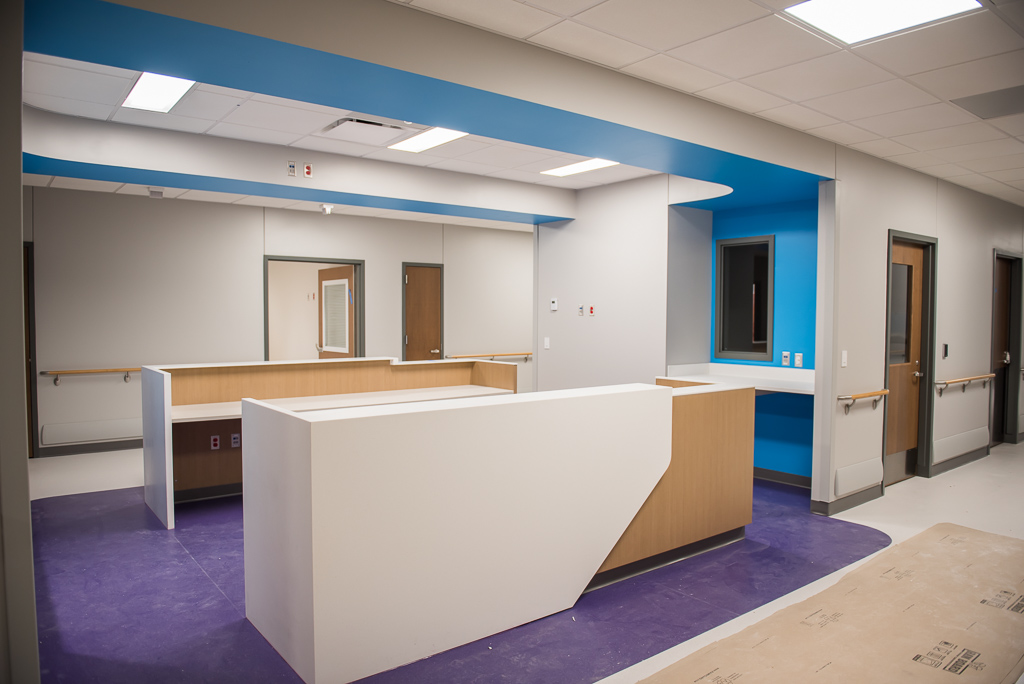
Putting IPD to work
The Hubbard Center is the first-ever Kiewit project to use an innovative contract model called Integrated Project Delivery (IPD).
IPD’s shared risk-and-reward framework gives accountability to every member of the team. That includes everybody from Children’s, the project owner, to Kiewit and HDR, to the trade partners on the job.
Collaboration is at the heart of this approach, which is designed to make every step of the job more efficient, with less downtime and waste, and with optimal results.
That kind of teamwork applies to the project’s financial model, where if certain criteria based on schedule, budget and quality are met, team members can earn additional profit.
It also applies to lending a hand to other team members who may need help with something that’s not discipline- specific — like resequencing work, resource-leveling craft workforce, moving material or stocking a floor.
In his 35 years with Kiewit, Abdouch said this is one of the most complex projects he’s worked on.
Being part of the IPD process has made him “a true believer” in the method and convinced him it’s the best way to manage a job with many moving parts.
“It’s a great way to build,” he said, “and it’s a great way of building camaraderie on a project and working in a team environment.”
Along with Children’s, Kiewit and HDR, the IPD trade partners include:
– The Waldinger Corporation – Mechanical,
– Plumbing, HVAC
– E&K of Omaha – Metal Studs and Drywall
– ECO – Electrical
– Architectural Wall Systems – Exterior Closure
– Drake Williams Steel – Steel Fabrication
– Davis Erection – Steel Erection
‘A lot of pride’
For the Kiewit team, the impact of their work isn’t lost on any member. Schultz may best sum up the sentiments of everyone on the job:
“The thing that I’m going to remember most about the project is just being a contributor to an amazing facility. I take a lot of pride in that. These kids all deserve a chance to have a healthy life.”
“This project has given our staff a lot of energy to reimagine their work and incorporate best practices as we start to think about the move,” said English. “We feel like Kiewit people are part of our team — and they’re leaving quite a legacy for Children’s.”
Children's has the region's only Level IV Neonatal Intensive Care Unit, with expertise to care for the very sickest and smallest babies. The Hubbard Center will offer an expanded NICU with larger rooms for families. — Photo courtesy of Children's Hospital & Medical Center.
The Hubbard Center will allow Children's to more fully realize its mission "to improve the life of every child." — Photo courtesy of Children's.
The new Hubbard Center for Children incorporates fun colors and designs as shown in the post-ambulatory care unit (PACU).


